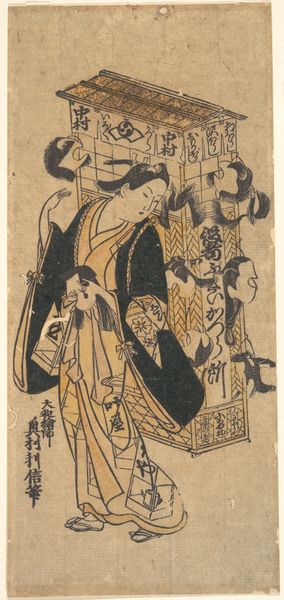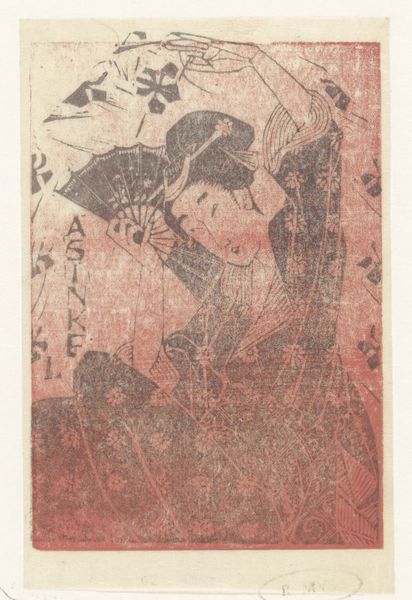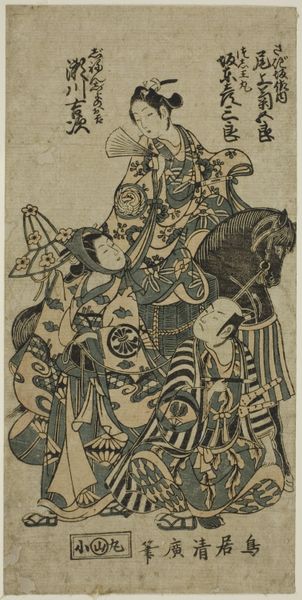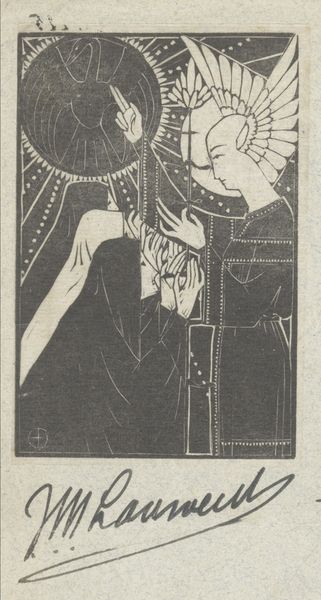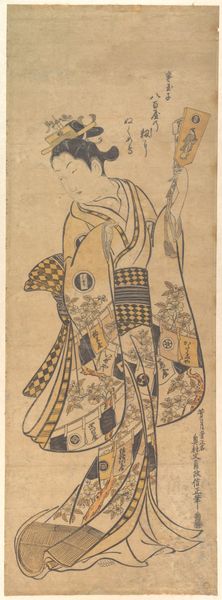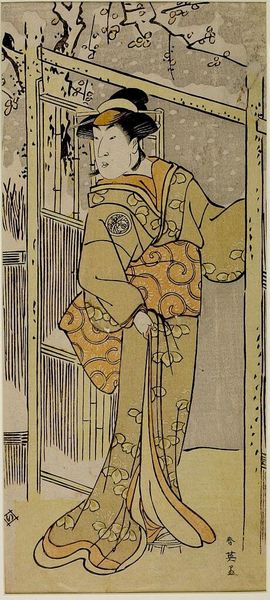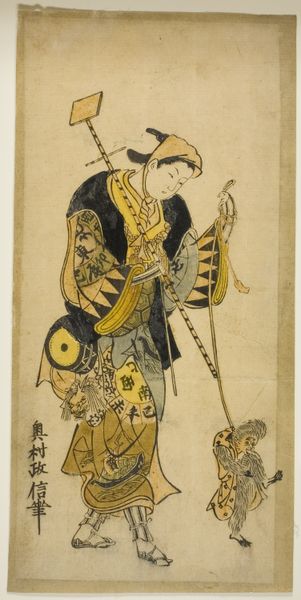
Fragment gebatikte textiel, voorstellende een Oosterse krijger met schild, in blauw, zwart en rood. c. 1892
0:00
0:00
careladolphlioncachet
Rijksmuseum
drawing, print, textile
#
drawing
#
ink painting
# print
#
asian-art
#
textile
#
figuration
#
orientalism
#
symbolism
Dimensions: height 83.5 cm, width 48 cm, height 87 cm, width 51.3 cm, depth 0.7 cm
Copyright: Rijks Museum: Open Domain
Curator: At first glance, the blue, black, and red hues of this textile give it a wonderfully ethereal, almost dreamlike quality. What are your thoughts? Editor: There is a stillness here. It’s a surprising calmness emanating from an image depicting a warrior. Curator: This textile fragment, dating from around 1892, is the work of Carel Adolph Lion Cachet. It depicts an "Eastern warrior with shield." He employed a batik technique here, traditionally used on fabric. The Rijksmuseum houses this particular piece. Editor: That shield immediately strikes me. Those stark lines forming what look like stylized hands. A symbolic gesture perhaps, offering protection or perhaps conveying vulnerability? Curator: Absolutely, and considering the context of Orientalism at the time, it becomes essential to examine how the "Eastern warrior" is being represented through a Western gaze. The colonial project profoundly influenced these depictions. It can be read through the theories of Edward Said, reflecting power dynamics. Editor: Yes. It appears to borrow from artistic styles in places like Indonesia and Japan—melding different visual traditions together into something entirely new, a sort of cultural remix reflecting Cachet’s engagement with Eastern aesthetics. But those visual tropes, used consciously or unconsciously, carry historical weight. Curator: And that weight is important when considering his artistic choices. For example, his use of color could be related to contemporary trends in Europe that associated particular colors with specific emotions and ideas. What stories might these tones convey in terms of gender? Power? Exoticism? Editor: Seeing it through that lens makes me rethink its perceived serenity. What if the placidness veils subjugation, projecting stereotypical passivity onto a culture viewed as other? That interpretation shifts its emotional resonance profoundly. Curator: Indeed. We can think about this object not just as an aesthetic representation, but as an ideological construction reflective of the complex intersections between culture, power, and identity. Editor: It reminds us that even seemingly tranquil images can hold complex historical echoes if we examine their symbolism and the assumptions baked into them. Curator: A vital point. Looking beyond the immediately obvious allows us to appreciate not just what the artist made, but the broader forces at play. Editor: I’m leaving this discussion with a stronger understanding of its many layers. Curator: As am I; It encourages a continued questioning of the narrative.
Comments
No comments
Be the first to comment and join the conversation on the ultimate creative platform.


